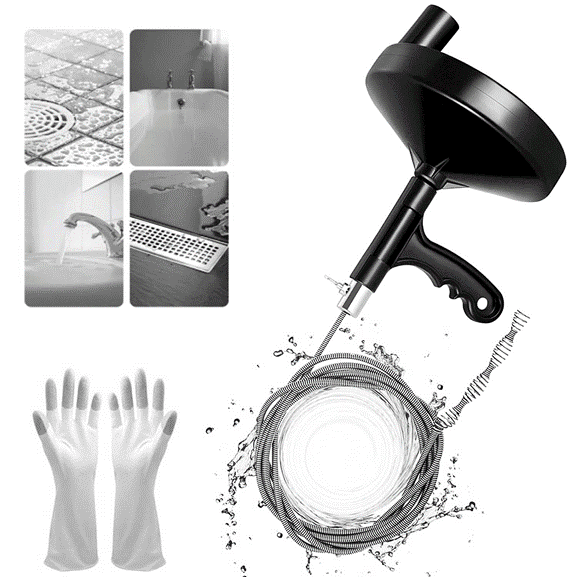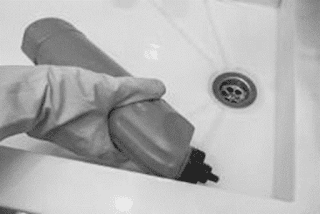How To Repair A Clogged Kitchen Drain
The kitchen drain is clogged with grease and food particles. Grease starts as a liquid, but as it flows down the drain, it hardens. You do not have to call a plumber when your kitchen drain is clogged. There are 5 ways to remove your drain blockage.
Method 1: Boiling Water
Before using the plunger, one of the easiest ways to remove the drain blockage is to use hot water.
Supplies needed
· Water
· Kettle
The clog (blockage), especially grease, can be dissolved by pouring boiling water down the drain. The hot water coming from the tap does not work. It should be boiling water.
A warning word; Do not pour boiling water into the ceramic pot. Do not use it if your pipes are plastic, as hot water will soften them. For plastic pipes, use a plunger.
Method
Using kettle boil liter of water in stove. And Pour the hot water down the drain slowly. If it does not dissolve the clog, then you can opt to use a plunger.
Method 2: Drain Plunger
You will need the right plunger for your kitchen sink. Very suitable for use is a cup plunger shown below.
Method
1. Fill your sink bowl with a few inches of water. This way, the cup of the plunger creates a tight seal.
2. Place the plunger in the drain opening. Make sure it is well sealed.
3. Using quick plunges, pump the plunger up and down several times. Do this several times, checking which clog will be pumped.
4. Once the pumping continues and the clog is removed, open the faucet and let it run for a minute or two to make sure the drain is clear.
Method 3: Sink Auger For Stubborn Stains
If the cup plunger does not unclog the drain, try a sink auger.
Method
1. Remove the stopper
2. Extend the auger cable into the drain opening. When it is in a bracket, pull out the 12-inch cable and tighten the set screw attached to the auger canisters.
3. Turn the crank handle clockwise without applying too much pressure to the cable. Twisting the cable helps to break the blockage or cross the bend. This prevents the cable from getting caught in the bend or on the blockage.
4. Continue to stretch the cable until you feel the plug loosen. This is very handy if there is a blockage inside the trap.
5. Pull out the cable from the pipe, pushing it back into the canister. You may see clogged matter stuck onto the end as it comes out of the drain.
6. Repeat as many times as needed until the blockage is removed.
7. Immediately start the drain, open the faucet and drain the hot water through the drain.
Method 4: Remove the Drain Trap to Auger The Branch Drain
If you still can't reach the blockage after stretching the cable into the trap, it could be a branch drain or a vertical drain in the wall.
Supplies needed
· Bucket
· Sink Auger
· Wrench Pipe
Reaching clogs beyond the trap will require a little more work but still easy to do.
Method
1. Keep a bucket at the bottom of the trap to catch the water that comes out when the trap is removed.
2. Unscrew the slips and trap using the tongue and groove pliers or pipe wrench. You will notice that the nylon slip washer is firmly in the tube. Restoration becomes easier.
3. Pour water from the trap and leave in the bucket. The severed ends of the pipe also drain the water into the bucket.
4. Push the auger cable horizontally inside the drain pipe. When you tighten the set screw, bend the cable and apply pressure to cross the bend.
5. As you work the cable deep inside the drain, you will work through the clog.
6. Remove the cable after you feel the clog has cleared.
7. Put back together with the drain trap. Open the faucet and flush hot water down the drain to remove any debris remaining.
Method 5: Should You Use Chemical Drain Cleaners?
Wouldn’t it be easier to use chemicals to remove your kitchen drain blockage?
This may seem like an easy option but do not clean the drains chemically. They are not only dangerous to the environment but also dangerous to your kitchen plumbing. In addition, they can be harmful to your health.
Also, chemical cleaners usually do not remove blockages in the drain. Instead, you will leave a sink full of toxic chemicals, and even worse, your sink will be filled with untreated water.











No comments:
Post a Comment